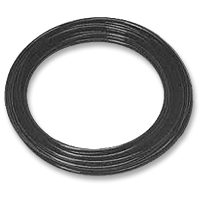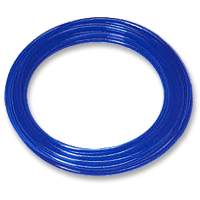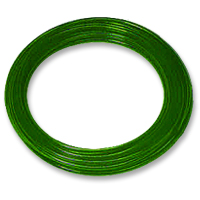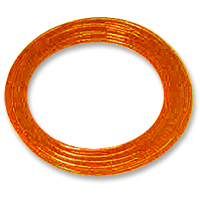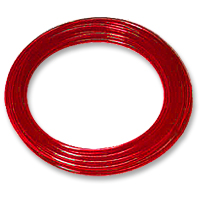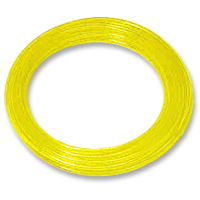| |
Polyethylene tubing is resistant to broad range of chemicals, solvent,
and corrosive atmospheric resistance with good dimensional stability
makes polyethylene suitable for many general applications.
Polyethylene is the most widely used tubing due to it’s
low cost and chemical compatibility.
Polyethylene tubing is derived either from low-density polyehylene
(LDP) or linear low-density polythylene(LLDP). The advantage
of the LLDP over the LDP is it’s
superior environmental stress crack resistance (ESCR). Either type complies with
the FDA regulation 21 CFR 177.1520© with regards to food contact applications.
Polyethylene is not as stable when exposed to sunlight as other tubings, but
it is chemically inert. Polyurethane
tubing’s flexibility and abrasion resistance make
it the ideal choice for pick-and-place and other automation
applications. When
selecting polyurethane tubing it is good to keep in mind
that not all types are suitable for use with push-to-connect
fittings. Only polyurethanes of a 95A durometer rating
should be used for push-to-connect fittings. While the
harder 95A is not as flexible as softer types of polyurethane,
it is still more flexible than most other types of tubing. Some
of the softer polyurethanes such as 90A, 85A, or 70A can
use a compression type fitting, but most should only be
used with barb fittings. Compared
to other types of tubing, polyurethane is not as strong
and thus tends to have a lower pressure rating. The lower
strength also results in thicker tubing walls for a given
outside diameter. This reduces the flow capacity of the
tubing. Generally
polyurethane should be used only in applications that require
superior flexing characteristics, such as pick-and-place
units. Various
grades of polyurethane are available to meet the specific
requirements of FDA, USDA, or NSF. As a naturally rubbery
material, polyurethane does not require any plasticizers
that could leach out over time.
| Features & benefits
of polyurethane |
| • extremely
flexible |
• extremely small bend radius is possible |
| |
|
| • low
gas permeability |
• resistant
to many chemicals |
Chemical
Information Polyurethane
is derived from Polyisocyanate and Polyol, and comes in
two different classes; ester and ether. The
ether-based polyurethane (polytetra-methylene glycol ether)
is the preferred choice for pneumatic applications due
to it’s resistance to moisture. Ester-base polyurethane
(polyester polycapro-lactone) while less expensive, and
stronger, tends to degrade when exposed to moisture.
- Broad range of corrosion resistance and chemical
compatibility
|
|
|
|
Applications:
|
- Corrosive atmosphere environments
|
- General low pressure and temperature applications
|
|
|
|


